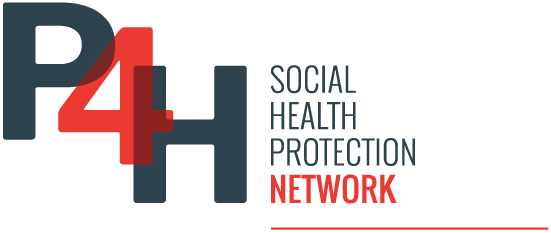As countries around the world respond to the COVID-19 pandemic, they are focusing on organizing and reconfiguring the delivery of healthcare services, such as screening modalities, home care and increasing the bed capacity of intensive care units, to meet the changing needs of the population. At the same time, they have to guarantee healthcare services for patients not affected by COVID-19. The WHO guidelines on COVID-19 can be consulted here. One of the main challenges is that the response to the pandemic implies increased costs beyond the budgets previously foreseen for the healthcare sector, and most healthcare systems cannot simply absorb these. Governments need to reprioritize and allocate additional funds to the Ministry of Health and other purchasers of healthcare services, such as health insurance funds, to meet additional and urgent healthcare needs.
Purchasing terms and conditions play an important role in facilitating and supporting pandemic-related service delivery adjustments for both COVID-19 and non-COVID-19 healthcare services. It is also essential to ensure the financial viability of healthcare providers and purchasers. It is important that any changes in purchasing terms and conditions are undertaken in line with the specific service delivery strategy.
By the health financing team at WHO headquarters and regional offices
In this blog, we propose 5 critical purchasing actions to support the response to the COVID-19 crisis.
1. Ensure that public funds are effectively translated into healthcare commons through appropriate purchasing arrangements
Public health functions and population-based services, such as global surveillance (including laboratories), data and information systems, regulation, and communication and information campaigns must be put in place, prioritized and strengthened to respond to the pandemic. Adequate public funding for the health commons must be ensured. The key issue is to transform these resources into a service for the effective implementation of these health commons. Above all, these resources need to reach the agencies and players in charge of these functions and activities quickly and reliably. The predominant purchasing methods are budget allocations to public institutions, and any obstacle to the complete and rapid execution of budgets must be removed. This means that the efficient operation of public financial management systems is the key factor.
To implement the enhanced infection prevention and control measures needed to manage COVID-19 safely, healthcare facilities need additional payments. Other activities, such as contact tracing and laboratory testing, are carried out by a multitude of providers, including private sector suppliers and NGOs, as well as local (health) authorities. It is therefore necessary to set up purchasing and payment methods adapted to the context, to enable and encourage service providers to provide these services. Finally, performance contracts can be useful for setting targets, and accountability mechanisms are essential to complement purchasing arrangements.
2. Expand the care basket and inform the public with clear, concise messages
It may be necessary to clarify or expand the package of services to ensure that COVID-19-related healthcare is covered, for example by adjusting the positive list of covered services, as well as related treatments and diagnoses. Ideally, these changes are imposed by legal provisions such as a decree.
As we pointed out earlier in the priority areas for responding to COVID 19 in the field of healthcare financing, all co-payments/user fees for all patients must be suspended for a defined period of time, to guarantee financial access to care. This should also apply to voluntary health insurance. In Vietnam, for example, treatment for COVID19 is paid for by the government budget, and screening is free for all. In South Africa, the COVID-19 test is free of charge in public hospitals. Additional resources are needed to compensate for the loss of revenue by service providers, in order to keep them in business. The abandonment of care or inadequate funding of healthcare facilities is compromising public health measures to respond effectively to the COVID-19 pandemic.
Communication and public information efforts are essential. Healthcare personnel and the general public need to know their rights regarding COVID-19 services. The government, ministry of health, health insurance funds or other healthcare purchasers must clearly specify and include in their risk communication strategy, public announcements and social media announcements the benefits that are guaranteed and free of charge to avoid any confusion.
3. Adapt payment methods and rates to new service delivery modalities and ensure continuity of funding flows to healthcare providers.
When providers, particularly hospitals, are paid on an activity basis (e.g., fee-for-service or case-based payment), they risk facing serious cash flow problems and loss of income – for example, due to the postponement of non-urgent medical care. At the same time, establishments are faced with rising expenses and costs (e.g. higher input prices, purchase of additional equipment and supplies, disruption of international supply chains, increased staffing requirements, etc.), which cannot be paid for out of ordinary income.
Firstly, systems must quickly provide hospitals and primary care facilities with additional funds, and managers must be empowered to use these funds flexibly to offset losses and adapt to changing healthcare needs. When facilities are paid on an ex-post basis (e.g. fee-for-service or case-based payment), it is necessary to anticipate payments to providers by making advance payments (e.g. by providing an initial budget against advance billings based on a certain increase over historical utilization levels). For example, in the Philippines, PhilHealth has prepositioned the equivalent of 90 days’ historical daily benefit payments and provided them to hospitals and other approved healthcare facilities. In China’s Hubei province, advance cash payments have been made by insurance funds to healthcare facilities. For more details on how to budget for the response to COVID-19 and related adjustments to public finance management rules, click here.
Secondly, purchasers need to modify payment methods and tariffs to incentivize the retention of existing services, while encouraging them to adapt new modalities, such as home or out-of-hospital care, new testing platforms and above all teleconsultation. In several countries, payment methods for teleconsultation have been introduced virtually overnight. For example, Belgium’s Institut national d’assurance maladie-invalidité has introduced two new service codes for physician teleconsultation concerning COVID-19. In this context, it is useful to encourage the acquisition of technology enabling the practice of teleconsultation, such as online appointment scheduling and videoconferencing software. Financial incentives can play a supporting role here.
The introduction of specific payment terms may also be necessary to enable the number of beds in intensive care units to be increased, while specifying how hospitals are to be contracted and paid for these services. In Germany, a lump-sum bonus of 50,000 euros was paid to encourage the conversion of hospital beds into intensive care beds. In addition, reimbursement to hospitals and other providers needs to be adjusted to compensate for reductions in demand for services in other areas, such as when intensive care beds are kept unoccupied for COVID-19 patients by postponing elective care. Finally, countries whose payment systems include a pay-for-performance method should review and adjust performance targets to ensure that appropriate care is provided and that incentives are adapted to new service delivery modalities.
Additional funding will also be needed to guarantee and encourage the availability of medical staff, and to reward their dedication to working in a high-risk environment and longer shifts. In France, for example, a special bonus in addition to overtime pay has been introduced to reward the dedication of staff and the risk they take in responding to the COVID-19 crisis. On the other hand, certain groups of surgeons and healthcare professionals will have reduced incomes due to the postponement of non-essential care, and in some countries we may need to find ways of compensating them.
4. Utilize private sector capabilities where needed
In many countries, the private sector – both for-profit and not-for-profit – offers a wide range of diagnostic, outpatient and inpatient services. As countries seek to increase response capacity to COVID-19, the potential contribution of private providers needs to be explored, including their potential roles and responsibilities in the national response. Broader guidance on engaging with private providers can be found here. This may require the rapid development of (simplified) procurement protocols and the adjustment of public finance management rules. We also need to specify the criteria for registering providers, the payment terms and rates, and the accountability mechanisms to ensure that private providers comply with treatment protocols and standards, and the policy of free care. In Nigeria, for example, private (and public) providers can provide treatment to patients with COVID-19 after being assessed by the COVID-19 accreditation committee of the Federal Ministry of Health. In Estonia, the private sector was rapidly contracted to increase overall testing capacity.
5. Establish governance mechanisms to speed up decision-making and set clear reporting standards.
Faster purchasing decisions for the COVID-19 response require effective governance arrangements. Clear rules and mandates for decision-making between government agencies as well as between different levels of government during emergency response are essential, and it may be necessary to modify procedures to speed up decision-making.
It is vital to ensure a coordinated and harmonized response to the crisis between purchasers and government players (Ministry of Health, social health insurance, voluntary health insurance, etc.), as well as with regard to private providers. This may require the creation of a coordinating body. The aim is to minimize and avoid disparities in the treatment of COVID patients, and to extend benefits to population groups not covered. Decisions will need to be taken on the funding streams that will cover the various services within the response, care coordination and referral rules, as well as harmonized pricing and fee structures. State of Emergency laws or public health laws often provide for such rules, or countries have to introduce them, with a key role for the Ministry of Health.
A unified database containing up-to-date buyer information, such as the number of suspected and confirmed cases as well as details of care pathways and treatments provided, is essential for coordinating and adjusting the COVID-19 response. However, data acquisition is often fragmented and poorly coordinated. For better population-wide planning, governments need to harmonize or establish clear standards of notification and case registration for different purchasers to ensure consistent reporting, monitor service delivery and have relevant and sufficient information to make pandemic-related purchasing decisions. This also requires the collection of data on all services and all population groups, including those with no explicit health coverage.
In conclusion, a strategic approach to the purchasing function is crucial, as it contributes to the response to COVID-19 by maintaining the financial viability of providers, including those deferred during the pandemic, while balancing the need to continue providing non-COVID-19 emergency care. Purchasing measures cannot be taken in isolation, and must go hand in hand with other measures to finance healthcare and the healthcare system. Adjustments in the purchasing function also need to be aligned with service standards and procurement mechanisms, among others, to ensure minimum technical criteria for drugs, devices and other technologies. This can also help prevent forgery. In addition, health insurance schemes need to find ways of dealing with late payment of contributions so that no one loses their coverage.
The purchasing function also creates room for innovation by adapting to changing needs and limitations on patient movement during the crisis. It can also increase the efficiency and responsiveness of the healthcare sector in the future, for example by encouraging the adoption of new modes of service delivery, such as teleconsultation. These innovations should be evaluated after the COVID-19 crisis, to shed light on their potential to make the purchasing function more efficient in the long term.
This blog reflects a collective effort by the World Health Organization’s health financing team at headquarters and in the regional offices for Africa, the Americas, the Eastern Mediterranean, Europe, Southeast Asia and the Western Pacific. Specific contributors include Inke Mathauer, Triin Habicht, Tomas Roubal, Valeria de Oliveira Cruz, Aurelie Klein, Joseph Kutzin, Fahdi Dkhimi, Camilo Cid, Tamás Evetovits, Bruno Meessen, Juliet Nabyonga, Claudia Pescetto, Agnès Soucat, Susan Sparkes, Tsolmongerel Tsilaajav, Helene Barroy and Hui Wang.

